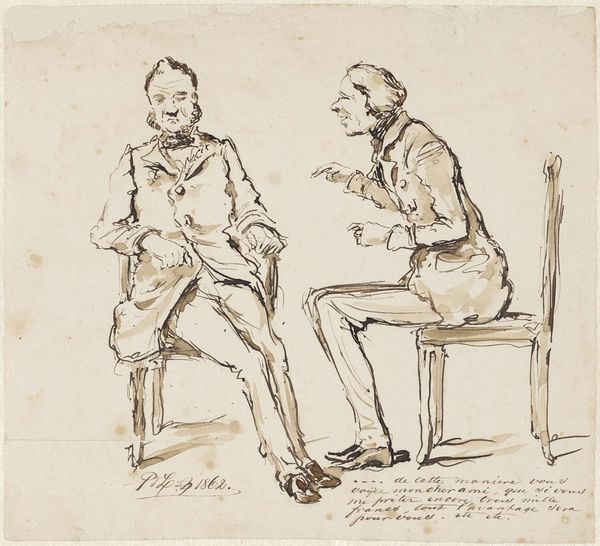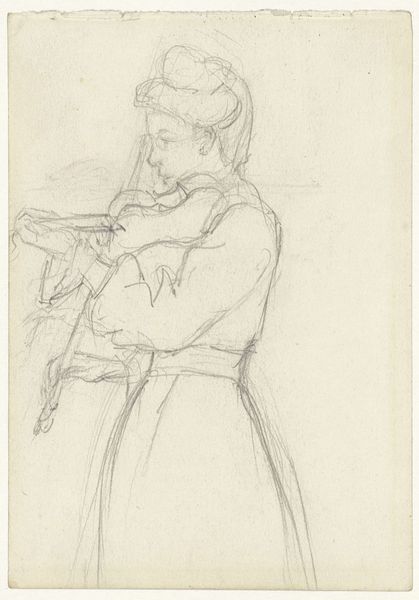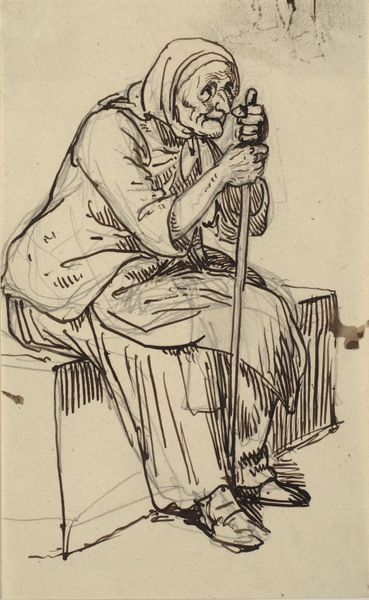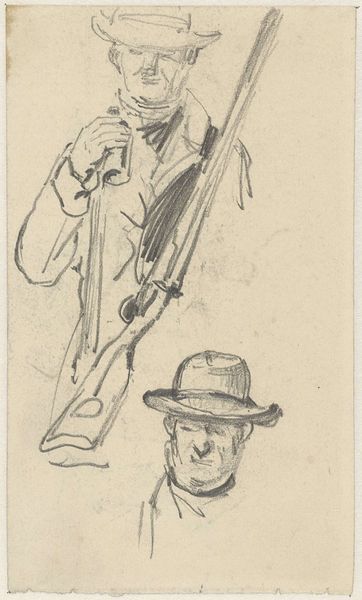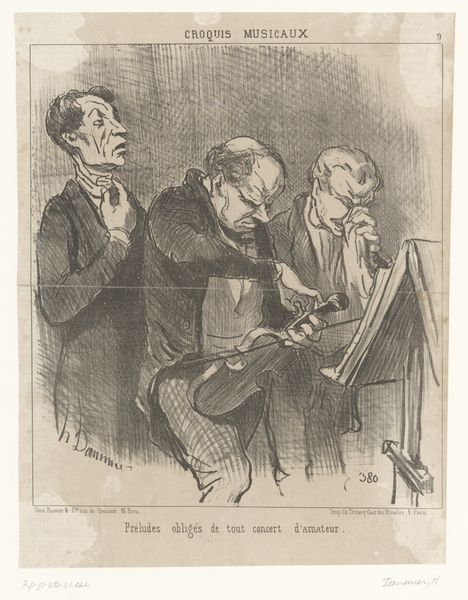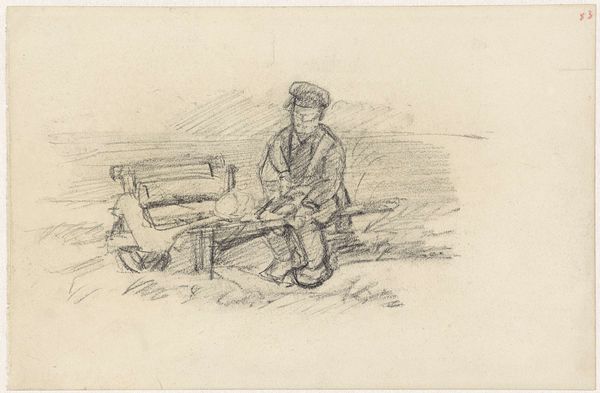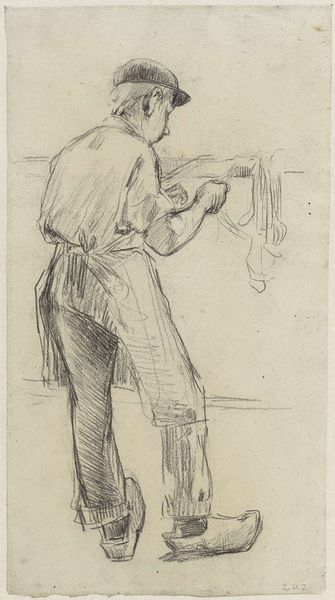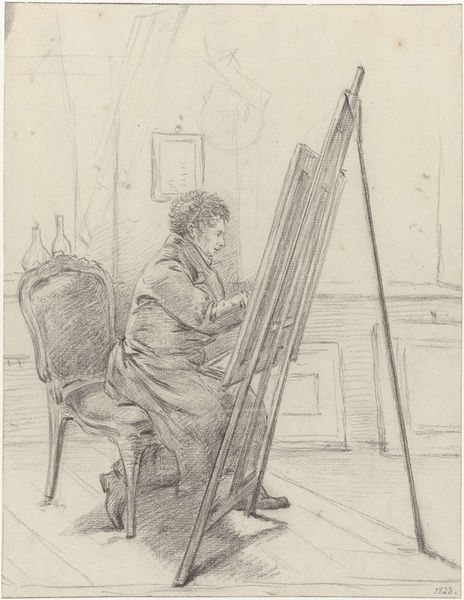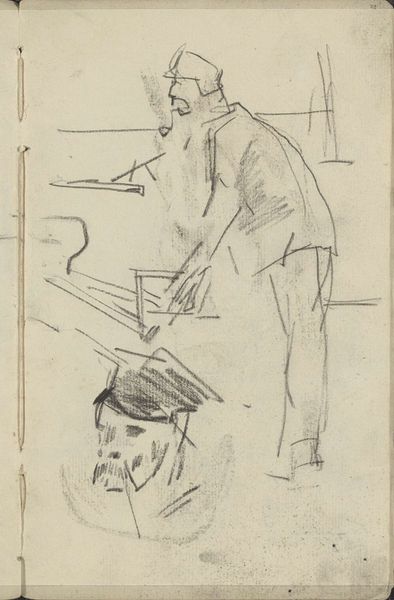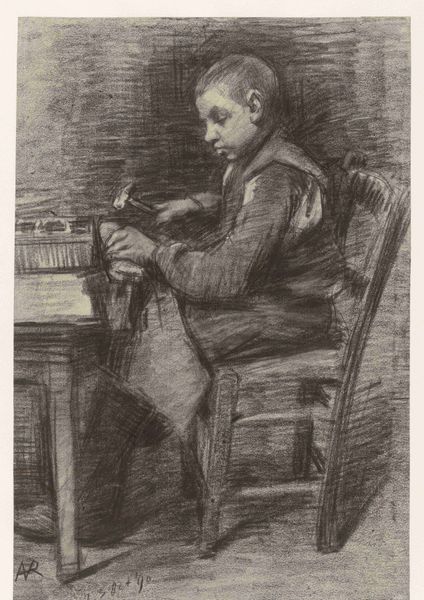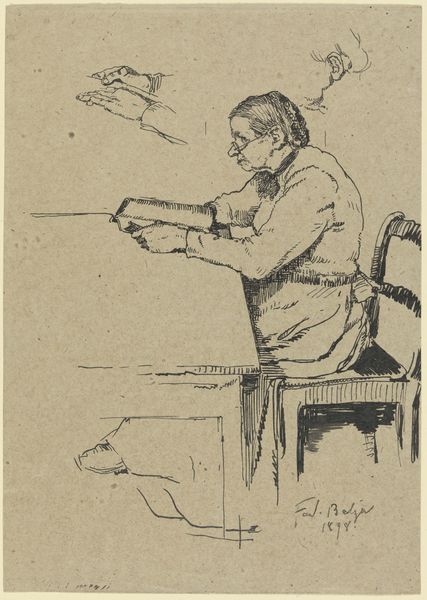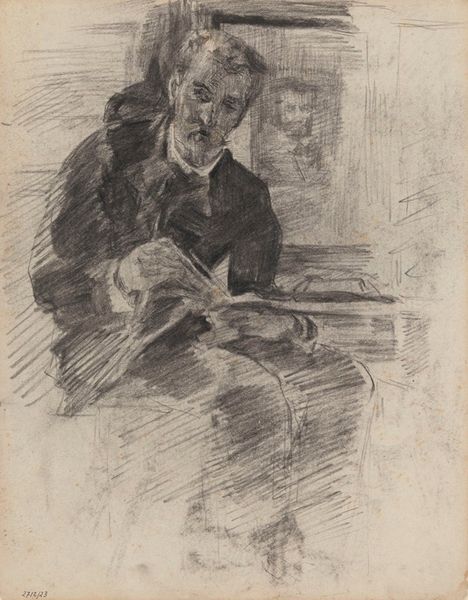
Dimensions: height 251 mm, width 188 mm
Copyright: Rijks Museum: Open Domain
Editor: This is David Bles's "Fluitspeler en hoboïst," a pencil drawing from around 1860-1861 held at the Rijksmuseum. The rough lines give it a casual, almost humorous feel. What stands out to you about this piece? Curator: I see a fascinating snapshot of 19th-century Dutch society, wouldn't you agree? Genre paintings such as these are about everyday lives. Who had access to musical instruments and training? Class played a crucial role. Notice anything about how they're positioned in relation to each other, and who seems to take precedence? Editor: I guess the figure in the front is seated more formally, maybe indicating a higher social standing than the one behind him. But both are clearly engaged in a cultural practice. Curator: Exactly. Consider this in light of burgeoning nationalism at the time. Who was given the power to define 'Dutch' culture, and whose contributions were perhaps overlooked? Were the musical traditions of all social classes and ethnic groups equally celebrated and represented in artistic portrayals such as this one? Editor: That's a perspective I hadn't considered. I was just thinking about the musicality. Curator: Sometimes what’s not shown or overtly stated speaks volumes. The work seems like an incomplete draft – as if the artist did not want to commit, politically. It might have just been quicker to represent those in positions of authority, while subtly erasing other faces and sounds in the rapidly transforming soundscape. Editor: It's amazing how much social commentary can be packed into what looks like a simple sketch. Thanks! Curator: My pleasure! Keep questioning those historical silences.
Comments
No comments
Be the first to comment and join the conversation on the ultimate creative platform.
